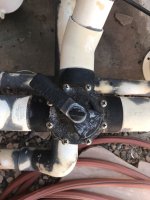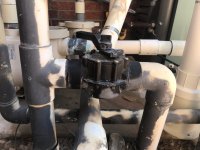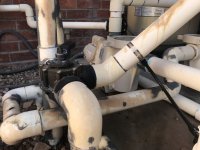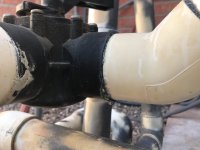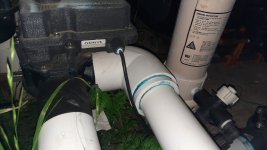There are a few options, I think, depending on what's going on. Is the leak from the bond between white pipe and the black 3-way? Is nothing cracked?
If something is cracked, yeah, rip out and replace. It is very hard to stop pressure side leaks by repairing with glue or FlexTape.
If it is not cracked, and it is coming from the union of the pipe to the Jandy (and if it were me):
I'd try:
A) Drain the water out of the pipe, clean and dry the area as best as possible, carefully scraping the union with a sharp blade so that you create a slight gap between the two for a couple millimeters into the Jandy. Then, re-cement the joint with PVC cement all around the union, making sure to try to shove the cement in the union gap. Let it cure for a few hours before running the water again.
B) Cut the PVC pipe up a little ways where you may me able to separate the pipe enough to carefully slide a rubber flex connector with 2 hose clamps down over the leak, tighten it down, then just cement a pvc coupler where you cut the pipe, or use another flex connector to reconnect the pipes where you cut.
C) Unglue the pipe from the Jandy, and re-do that section of PVC. There are methods of using hole saws, or other metal cylinders that fit inside the I.D. of the pipe, heated up with a blow torch to extremely hot temperatures to "unglue" PVC. I have done this, myself, and it works. The fumes are toxic, and the hole saw needs to be VERY hot, so a lot of caution is needed. You could use this "hot hole saw" method to cut the PVC close to the 3_way, and basically melt the piece out of the Jandy, and replace only this section of pipe. Google it. I am not responsible for anything that goes wrong with this method. This can be dangerous, so please make sure you know what you're doing ... don't use galvanized metal to do this, don't heat the metal inside the pipe (heat the metal and then insert it), don't breathe in the fumes...
D) Rip it all out and replace.


